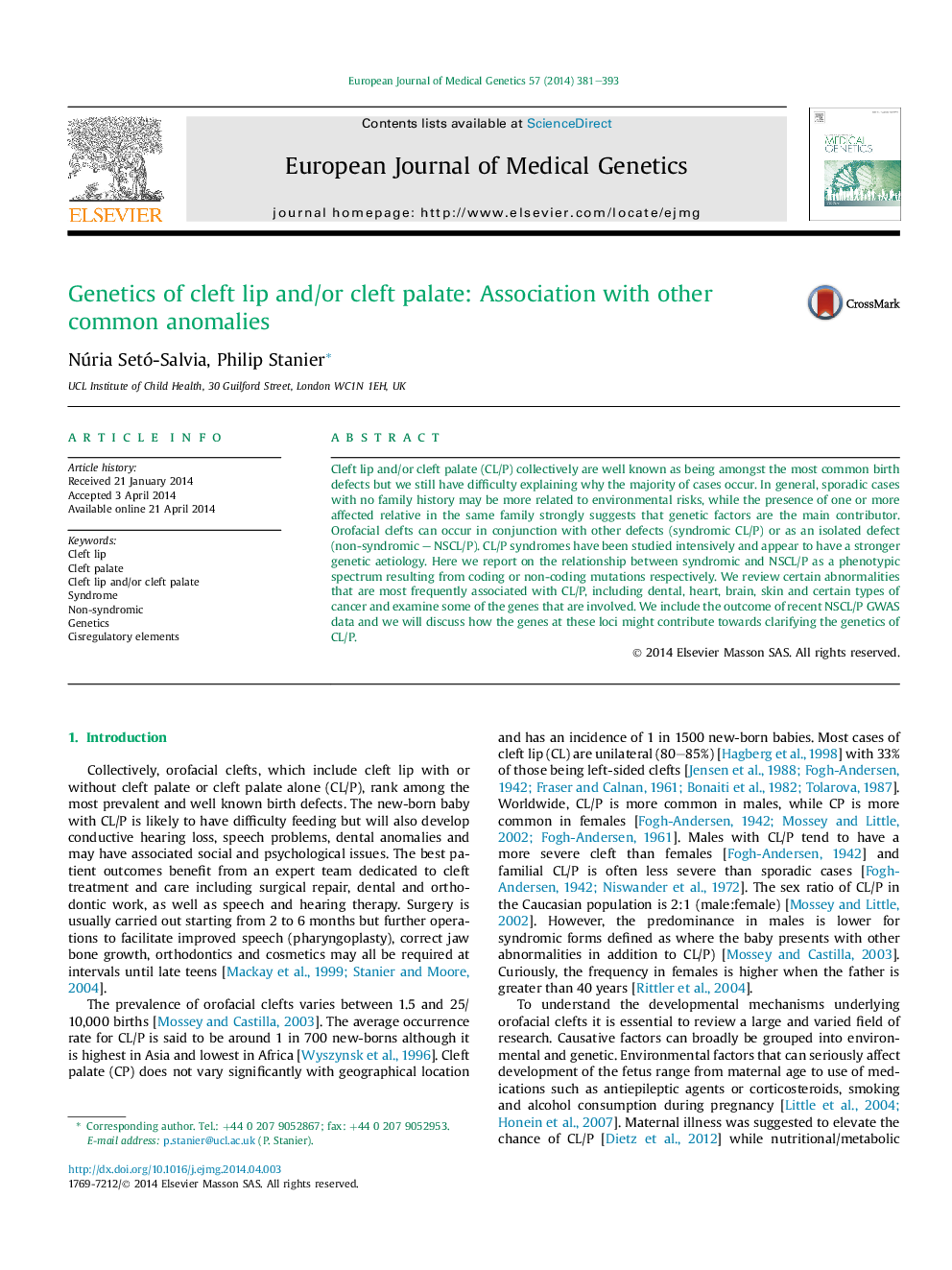| Article ID | Journal | Published Year | Pages | File Type |
|---|---|---|---|---|
| 5904879 | European Journal of Medical Genetics | 2014 | 13 Pages |
Cleft lip and/or cleft palate (CL/P) collectively are well known as being amongst the most common birth defects but we still have difficulty explaining why the majority of cases occur. In general, sporadic cases with no family history may be more related to environmental risks, while the presence of one or more affected relative in the same family strongly suggests that genetic factors are the main contributor. Orofacial clefts can occur in conjunction with other defects (syndromic CL/P) or as an isolated defect (non-syndromic - NSCL/P). CL/P syndromes have been studied intensively and appear to have a stronger genetic aetiology. Here we report on the relationship between syndromic and NSCL/P as a phenotypic spectrum resulting from coding or non-coding mutations respectively. We review certain abnormalities that are most frequently associated with CL/P, including dental, heart, brain, skin and certain types of cancer and examine some of the genes that are involved. We include the outcome of recent NSCL/P GWAS data and we will discuss how the genes at these loci might contribute towards clarifying the genetics of CL/P.
